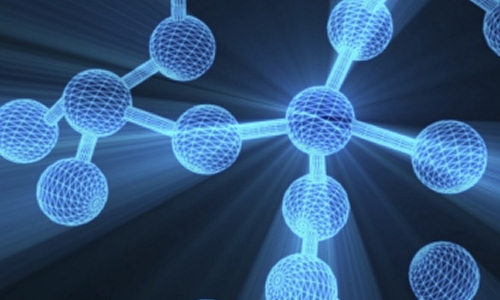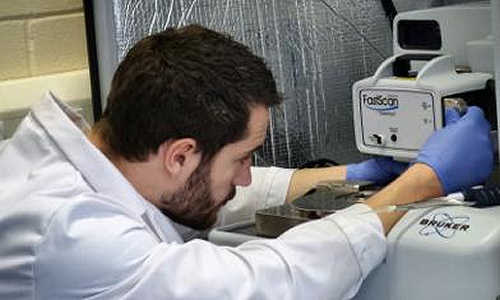Scientists at New York University and the University of Melbourne have developed a method using DNA origami to turn one-dimensional nano materials into two dimensions. Their breakthrough, published in the latest issue of the journal Nature Nanotechnology, offers the potential to enhance fiber optics and electronic devices by reducing their size and increasing their speed.
“We can now take linear nano-materials and direct how they are organized in two dimensions, using a DNA origami platform to create any number of shapes,” explains NYU Chemistry Professor Nadrian Seeman, the paper’s senior author, who founded and developed the field of DNA nanotechnology, now pursued by laboratories around the globe, three decades ago.
Seeman’s collaborator, Sally Gras, an associate professor at the University of Melbourne, says, “We brought together two of life’s building blocks, DNA and protein, in an exciting new way. We are growing protein fibers within a DNA origami structure.”
DNA origami employs approximately two hundred short DNA strands to direct longer strands in forming specific shapes. In their work, the scientists sought to create, and then manipulate the shape of, amyloid fibrils—rods of aggregated proteins, or peptides, that match the strength of spider’s silk.
To do so, they engineered a collection of 20 DNA double helices to form a nanotube big enough (15 to 20 nanometers—just over one-billionth of a meter—in diameter) to house the fibrils.
The platform builds the fibrils by combining the properties of the nanotube with a synthetic peptide fragment that is placed inside the cylinder. The resulting fibril-filled nanotubes can then be organized into two-dimensional structures through a series of DNA-DNA hybridization interactions.
“Fibrils are remarkably strong and, as such, are a good barometer for this method’s ability to form two-dimensional structures,” observes Seeman. “If we can manipulate the orientations of fibrils, we can do the same with other linear materials in the future.”
Seeman points to the promise of creating two-dimensional shapes on the nanoscale.
“If we can make smaller and stronger materials in electronics and photonics, we have the potential to improve consumer products,” Seeman says. “For instance, when components are smaller, it means the signals they transmit don’t need to go as far, which increases their operating speed. That’s why small is so exciting—you can make better structures on thetiniest chemical scales.”
Other NYU researchers included Anuttara Udomprasert, Ruojie Sha, Tong Wang, Paramjit Arora, and James W. Canary.
Story Source:
The above story is based on materials provided by New York University.




